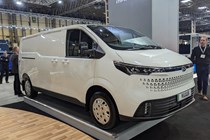Electric cars are a big deal. Now, almost every manufacturer has at least one in their line-up with the hope the technology can help reduce our CO2 emissions and slow the effects of climate change.
And electric cars are making an impact. The Society of Motor Manufacturers and Traders (SMMT) reports that, at the end of 2022, electric and plug-in hybrid cars accounted for 22.9% of new car registrations – a record high. Because of this shift in buying trends, average CO2 tailpipe emissions fell by 6.9% year-on-year to 111.4g/km.
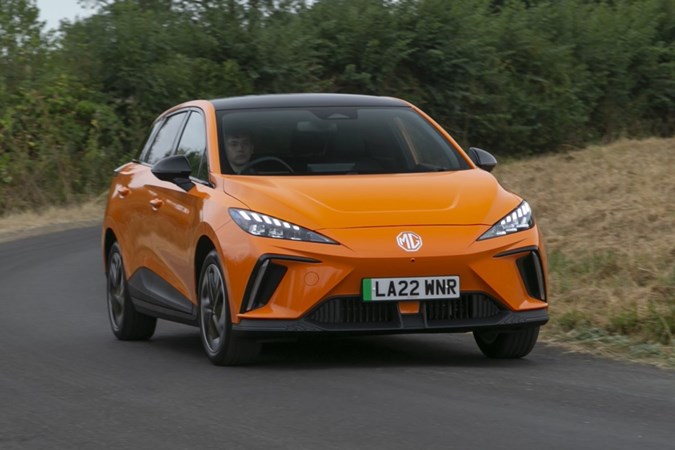
But electric cars aren’t the only solution to solving the climate crisis. Car manufacturers and big businesses are currently trialling alternative fuels that promise to deliver net-zero carbon emissions while side-stepping the long recharge times that make electric cars prohibitive for long distance drivers or those that live in remote areas without an EV charging infrastructure.
Below, we’ll explore the two biggest technologies that are poised to hit the market at scale within the next decade – synthetic fuels and hydrogen. Both are well into their prototype phases and both offer refuelling times that are as convenient as filling a conventional car with petrol or diesel. Scroll down to learn more.
Synthetic fuels: guilt-free petrol
Synthetic fuels (or eFuels) are fuels that have been made in a lab. Currently, the biggest player in the field is Porsche, who has already constructed a working synthetic fuel plant in Chile that uses enormous filters to suck carbon dioxide out of the air and break off the carbon atoms.
These carbon atoms can then be combined in the correct quantities with hydrogen, collected by electrolysis, to create any combustible fuel. Petrol, diesel, kerosene – you name it, Porsche can make it out of thin air. Plus, the company vents the oxygen produced by separating the carbon dioxide molecules into the atmosphere, meaning the plant effectively works like a giant mechanical tree.
Here’s the clever bit. Because synthetic fuel is made from carbon pulled from the atmosphere, it doesn’t release any new carbon dioxide when it’s burned. It simply recycles the raw materials that are already in the air – and that means it would neutralise the CO2 emissions of every petrol- and diesel-powered vehicle on UK roads overnight if it were to hit our forecourts at a country-wide scale.

Plus, unlike electric cars, synthetic fuel doesn’t require a complete infrastructure overhaul to get it onto the mass market. The chemical composition of the liquid is identical to the petrol and diesel made from squashed dinosaurs, so our existing fuel tankers could be used to transport it to our existing petrol stations, where it can be stored in their existing underground tanks.
One last benefit of synthetic fuels is that they’ll allow car enthusiasts to keep enjoying their hobby long into the future, completely guilt-free. Indeed, this seems to be one of the key motivators behind Porsche’s investment in synthetic fuels. The company has already promised that it’ll keep selling its iconic 911 sports car with a petrol engine for ‘as long as possible.’
Synthetic fuels also present an interesting solution to the UK’s recent political developments. In September 2023, the government rowed back on its pledge to ban the sale of new petrol and diesel cars by 2035 due to the slowing uptake of electric vehicles and the fear of pushing struggling families into poverty. This change in legislation wouldn’t be needed if synthetic fuels reached the mass market. And, happily, Porsche reckons it can do this before 2030.
Confirmed: CO2-neutral fuels on sale by 2030
We chatted to Karl Dums, Porsche’s Senior Project Lead for eFuels, at the 2023 Munich Motor Show – and he seemed very confident that he and his team of engineers could get synthetic fuels into the tanks of everyday cars before the end of the decade. What’s more, he reckons it’ll be as affordable as conventional petrol or diesel, if not a little cheaper.
When quizzed on when we’d be able to buy Porsche’s eFuels, he said: ‘I believe this can happen within this decade.’ He added: ‘The main intention on our side is to find a solution for the existing car fleet because this existing car fleet is mainly driven by combustion engines – and they will not disappear within the next decades.’
However, Dums is acutely aware of the challenges facing his fledgling technology, especially because Porsche’s plant is only expected to have an annual production volume of 55 million litres of fuel by the end of 2025. That’s a lot, but it’s nowhere near enough to supply a country. For context, the UK consumed 13 billion litres of petrol in 2021 alone.
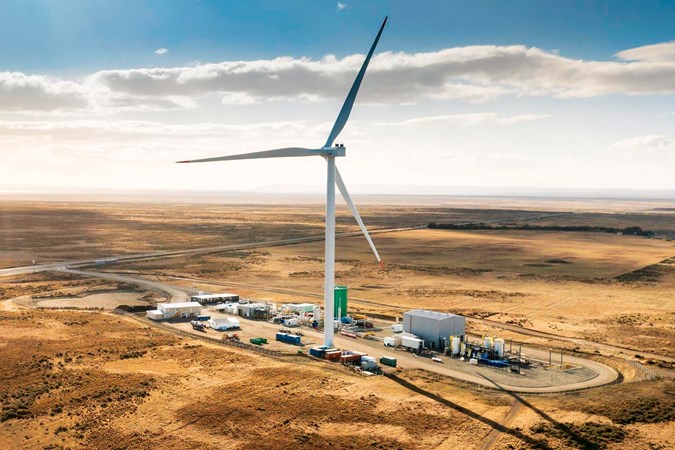
Because the scale of the project is still quite small, selling eFuel to the public isn’t yet commercially viable. It would be prohibitively more expensive than normal petrol and diesel – even at their current prices. But Dums is confident increased production will bring decreased costs.
‘The competitiveness is related to the upscale,’ he said. ‘The bigger you get, the more competitive you can be. You need to have a big factory and, if you do that, I’m pretty sure that you can reach competitiveness to fossil fuels.’
Hydrogen fuels: hassle-free electric motoring
Hydrogen fuels work a little differently to synthetic fuels because they don’t (normally) involve internal combustion. They generate electricity using a hydrogen fuel cell. In simple terms, a fuel cell works like a big battery, with an anode on one end and a cathode on the other.
The hydrogen is first fed through a catalyst, which separates the molecules into protons and electrons. The protons pass through the fuel cell to the cathode, where they’re combined with oxygen and the separated electrons to produce electricity.
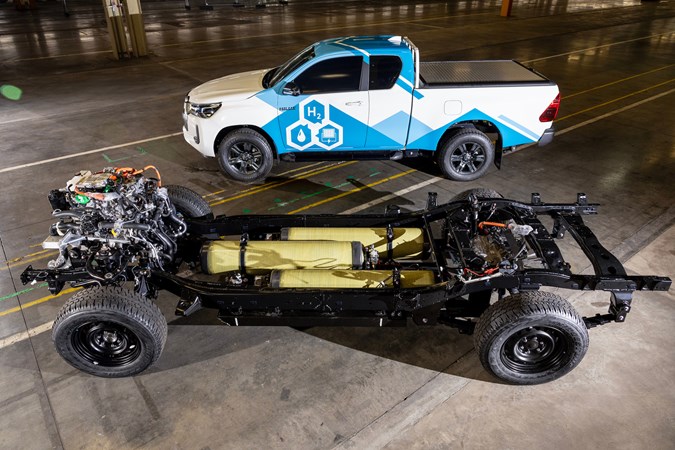
That electricity is then used to power an electric motor – and that means hydrogen fuel cell vehicles offer all the benefits of an EV (instant torque (pulling power), silent running, zero CO2 emissions) with none of the drawbacks (slow recharge times and perishable battery packs).
Toyota is blazing the trail here. It pioneered hydrogen technology with the Mirai saloon and it has already built a hydrogen fuel cell-powered Hilux pick-up truck that’s set to enter working trials in limited production before the end of 2023. The firm has even built a GR Yaris rally car prototype that burns hydrogen in a specially modified internal combustion engine, but that technology is still a long way from reaching the mass market.

The tech in the rally car isn’t where the industry seems to be heading, either. We spoke to lots of commercial vehicle manufacturers at the 2023 CV Show – and the consensus is that hydrogen fuel cell technology will become the solution to cutting the CO2 emissions of our vans, heavy goods vehicles and plant machinery.
The two biggest benefits of hydrogen technology for working vehicles are as follows. First, it leaves more gross weight available for payloads because hydrogen fuel cell vehicles don’t need to drag around a heavy battery pack like a conventional EV. Second, the vast amount of torque available from an electric motor is perfectly suited to hauling massive loads.
The chicken and egg: infrastructure or vehicles first?
The strongest counter argument for hydrogen technology is the lack of a hydrogen infrastructure. In April 2023, there were only around a dozen hydrogen filling stations in the UK – and the big players in the commercial vehicle game are reluctant to throw their weight behind the technology before there’s a guaranteed, steady supply of fuel.
Iveco presents a textbook example of the conundrum manufacturers are dealing with. It already has a working eDaily hydrogen van prototype, but it won’t put it on the market. We quizzed Iveco on whether it could do anything to hurry the process along (such as building its own hydrogen filling stations in a Tesla-esque style to feed its vans), but the company is unwilling to take the lead.
Mike Cutts, Iveco’s Light Business Line Director, told us: ‘I think [our job is] the same as what we’ve done with the LNG and the CNG gasoline network. It’s to lobby the government to help support and engage the fuel companies to build the infrastructure around it.
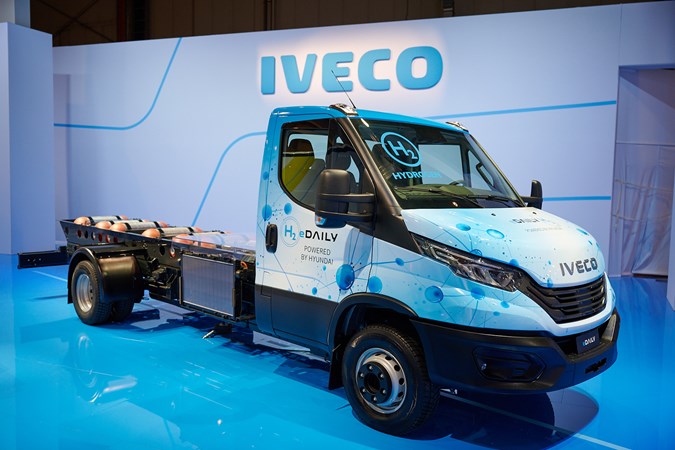
‘It’s always chicken and egg, you know, the infrastructure guys don’t want to build it until the trucks are there. But people don’t want to buy the trucks until the infrastructure’s there. So, it has to work in tandem together.’
Cutts’ measured approach to hydrogen tech was echoed by his competitor brand, Maxus. Mike Barrett, the company’s Director, walked us through his expectations for the coming years, saying: ‘My own personal feeling and opinion on it is I think hydrogen. Yes, maybe in the heavier commercial vehicles. You know, versus our [lighter] commercial vehicles.’
But Barrett was equally aware of the infrastructure problems, saying: ‘When we look at the reality, of the journey so far with EV and where the charging infrastructure was 10 years ago – and remember the tough journey of that for the last 10 years. If we were looking at starting up in the morning with hydrogen, you know, it’s going to take that period to get the infrastructure.’
Luke Wilkinson is Deputy Editor of Parkers. He spends his time writing news, reviews, features and advice pieces for both Parkers and its sister site CAR magazine.
Just so you know, we may receive a commission or other compensation from the links on this website - read why you should trust us.










